Earlier version of the device was reconsidered in terms of following aspects:
• Accommodating for different refractive errors
• Aesthetics
• Ergonomics
• Weight distribution
OIO

ASSEMBLY
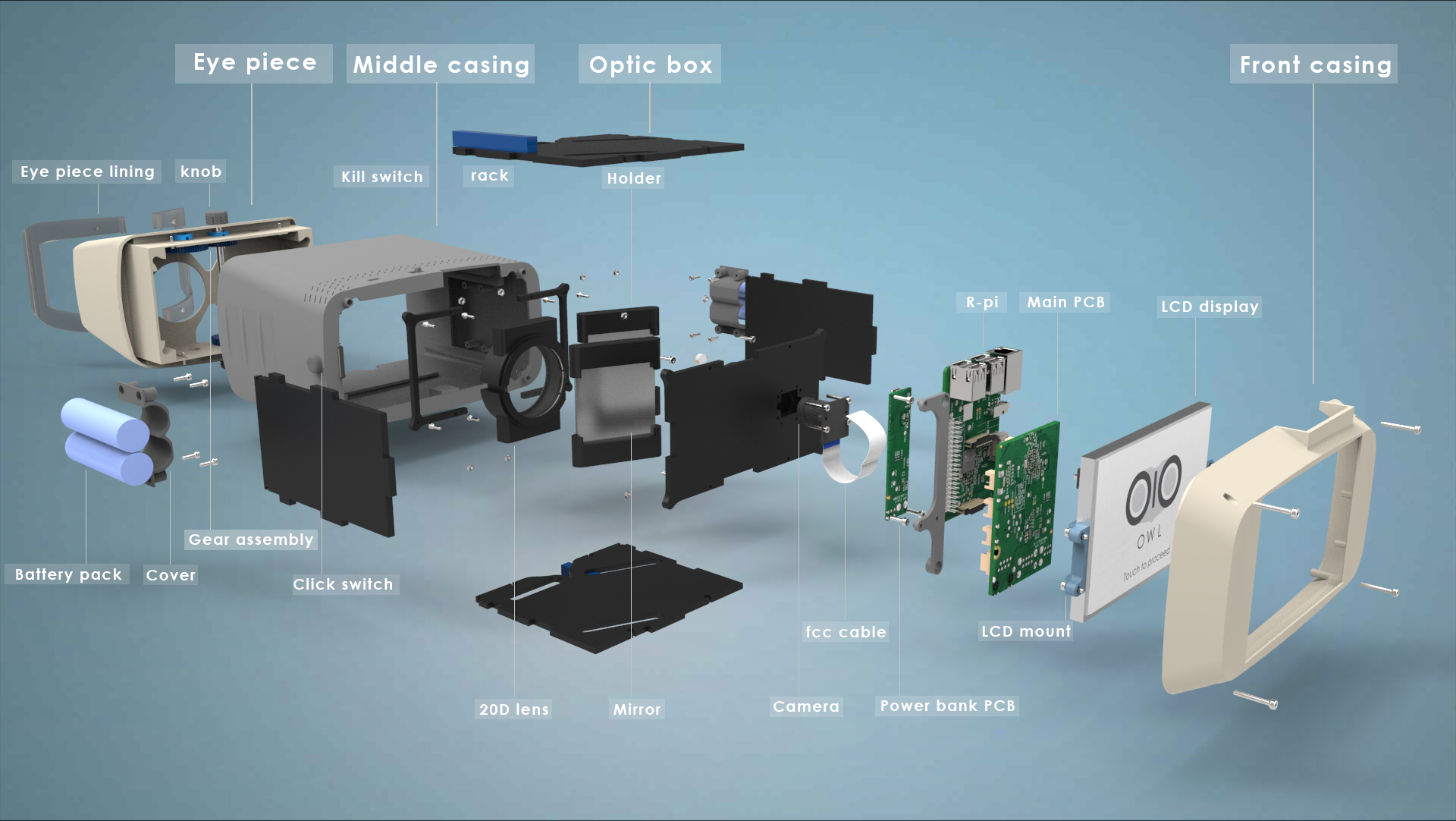
EXPLODED ASSEMBLY
1. ACCOMMODATING FOR DIFFERENT REFRACTIVE ERRORS
For different people with varying refractive errors, focal length for the 20D lens changes.
For an eye with normal refractive error, the distance between the 20 D lens and the eye has to be 50mm for a focused image of the fundus.
For people with negative errors, the distance goes on increasing and for people with positive refractive errors, the distance goes on increasing.
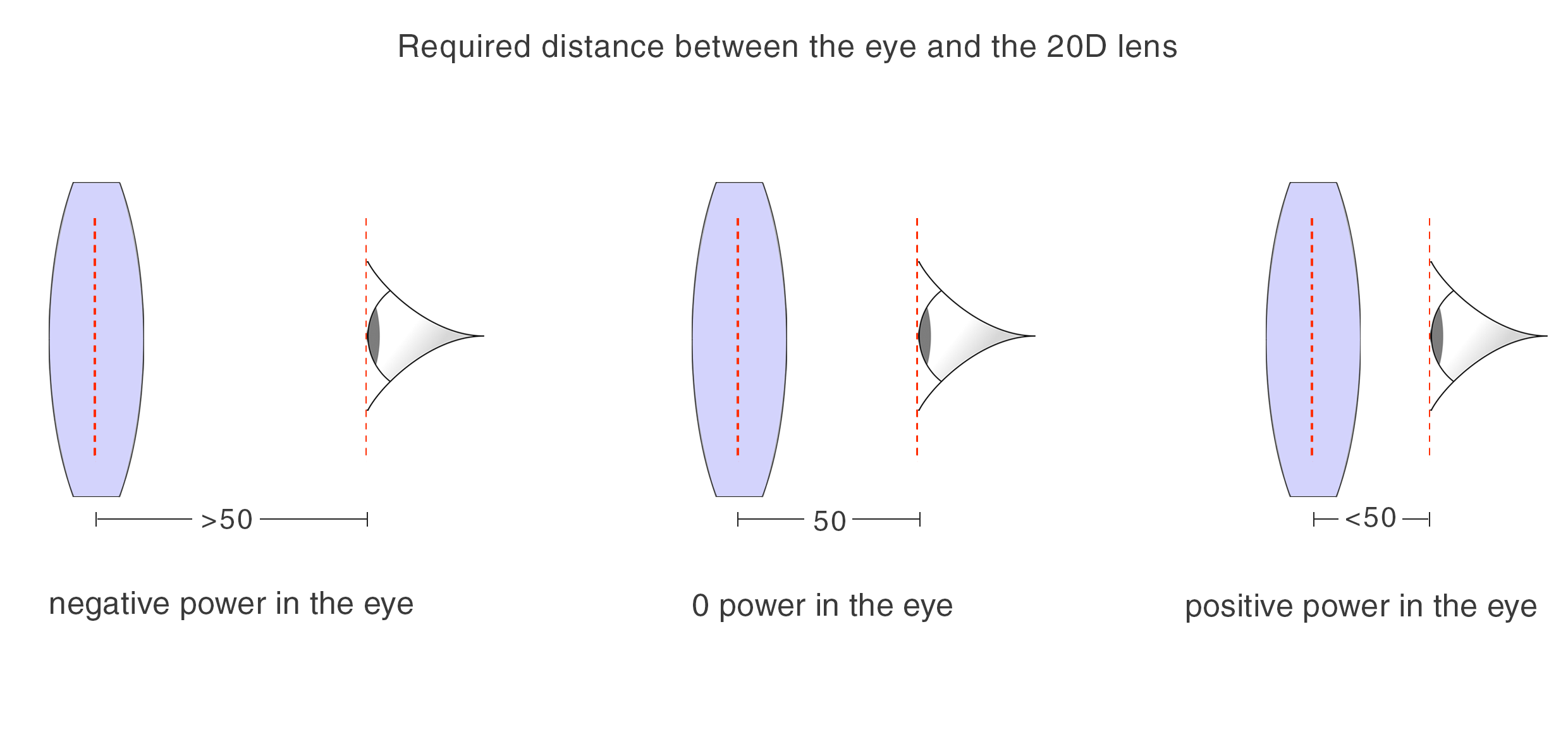
BEFORE
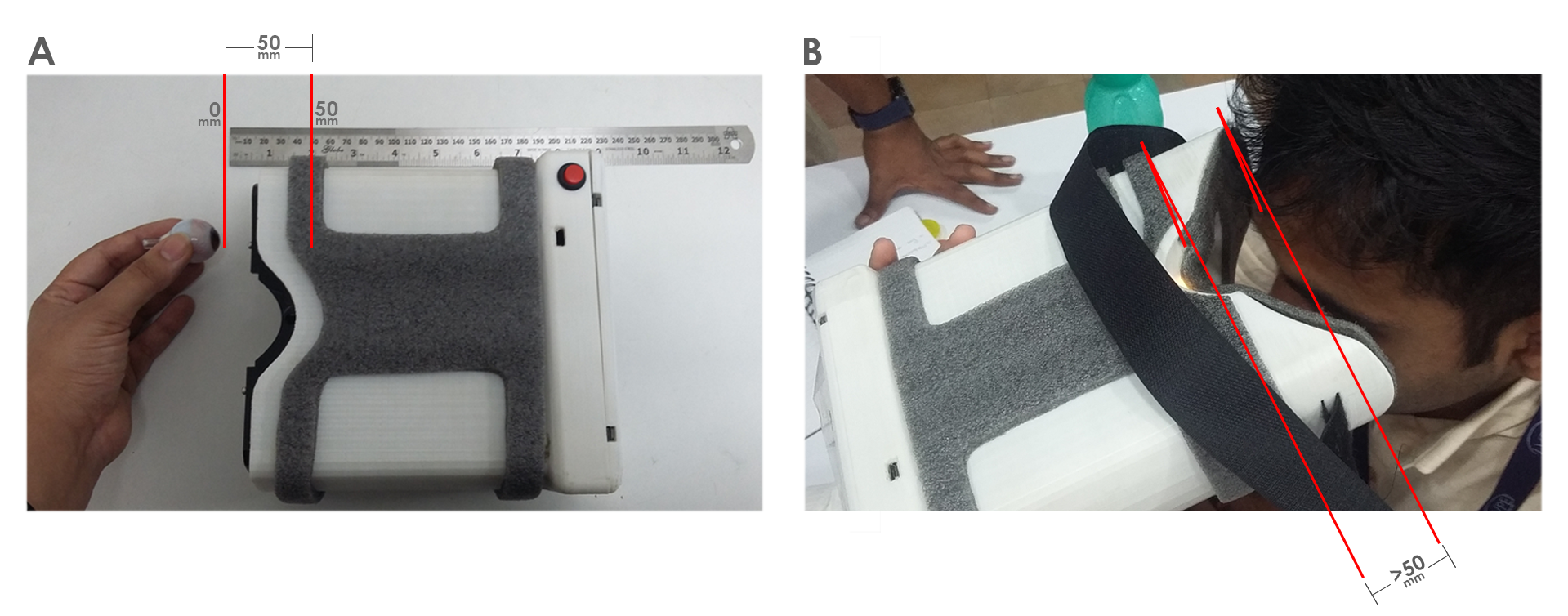
A. In the earlier iteration,the optic box was fixed at particular position such that the distance between the eye and the 20D lens was 50mm.
B. Position of the device with respect to the patient's eye with a negative refractive error (power) . As the person has some negative error, the distance between the eye and the 20D lens is more than 50mm. Hence the device has to be held away from the face to increase the distance.
AFTER

The optic box moves back and forth inside the device by means of sliders which are integrated as a part of the eye piece and the middle housing.
The box moves by the means of a rack and pinion assembly.
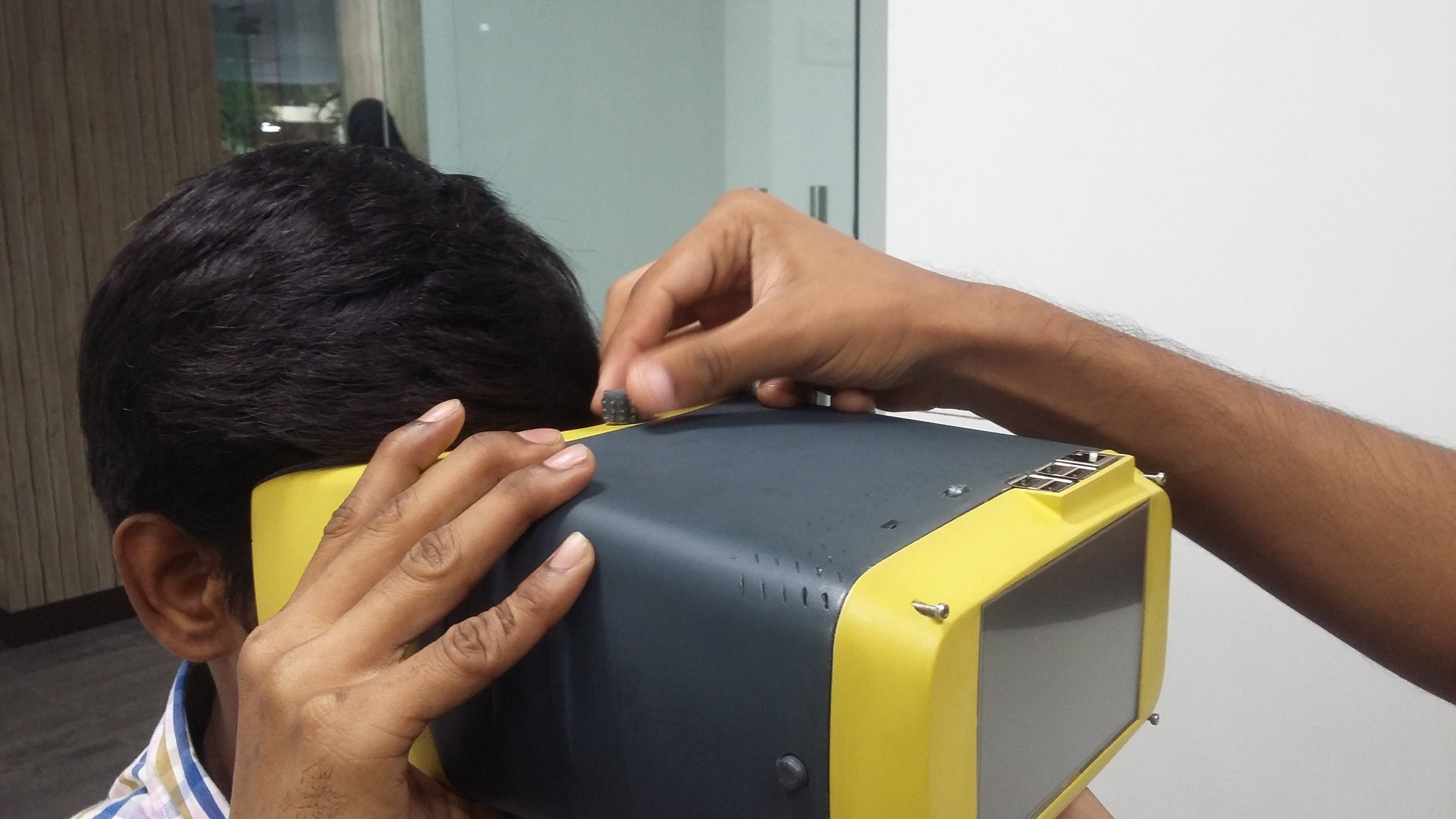
The distance between the eye and the lens can be adjusted by rotating the knob as in the image above.
2. AESTHETICS
The meaning that the appearance of a product communicates helps consumers to assess the product on functional, aesthetic, symbolic or ergonomic motives in this case a medical setting.
A. COLOR and MATERIAL

The subtle colors used, grey and beige, are suitable for a medical device. These colors have a calming effect on the patients.

The material used is medical grade and is safe for use.
The part of the eye piece which comes in contact with human skin has been made out of silicone. Thus it can be cleaned with alcohol swabs after every testing.
B. FORM FEATURES
The physical appearance or form makes the device look safe and easy to use.The basic aesthetics including contours and curves tend to make the product intuitive for the end user.

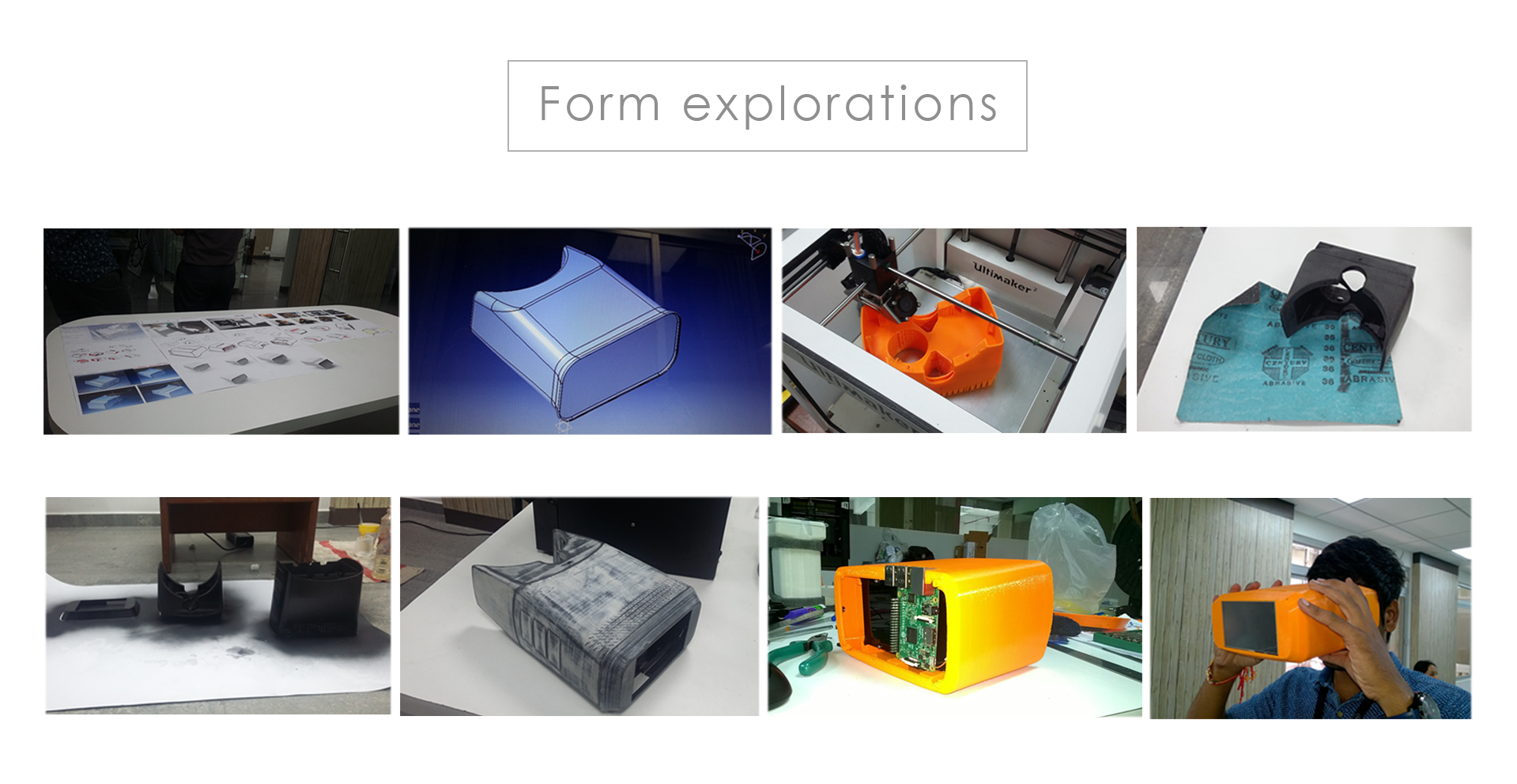
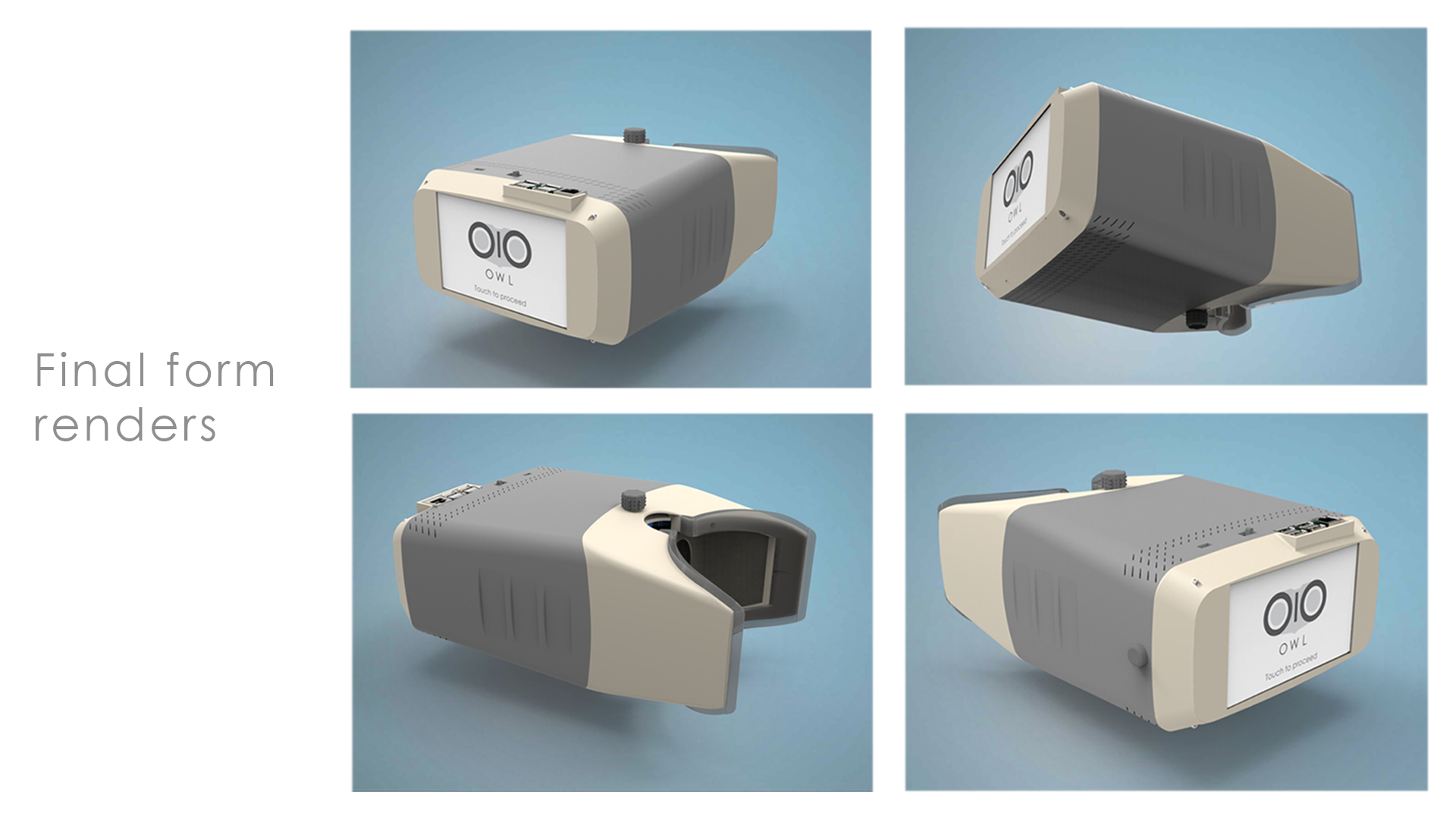 There are suggestive grips provided at strategic places on both sides to ensure correct handling and positioning.
There are suggestive grips provided at strategic places on both sides to ensure correct handling and positioning.
These provide a clear boundary between the interaction of the patient with the device and the clinician with the device.
The heat sinks provided on the outer housing near the R-pi add to the aesthetics of the device.
3. ERGONOMICS
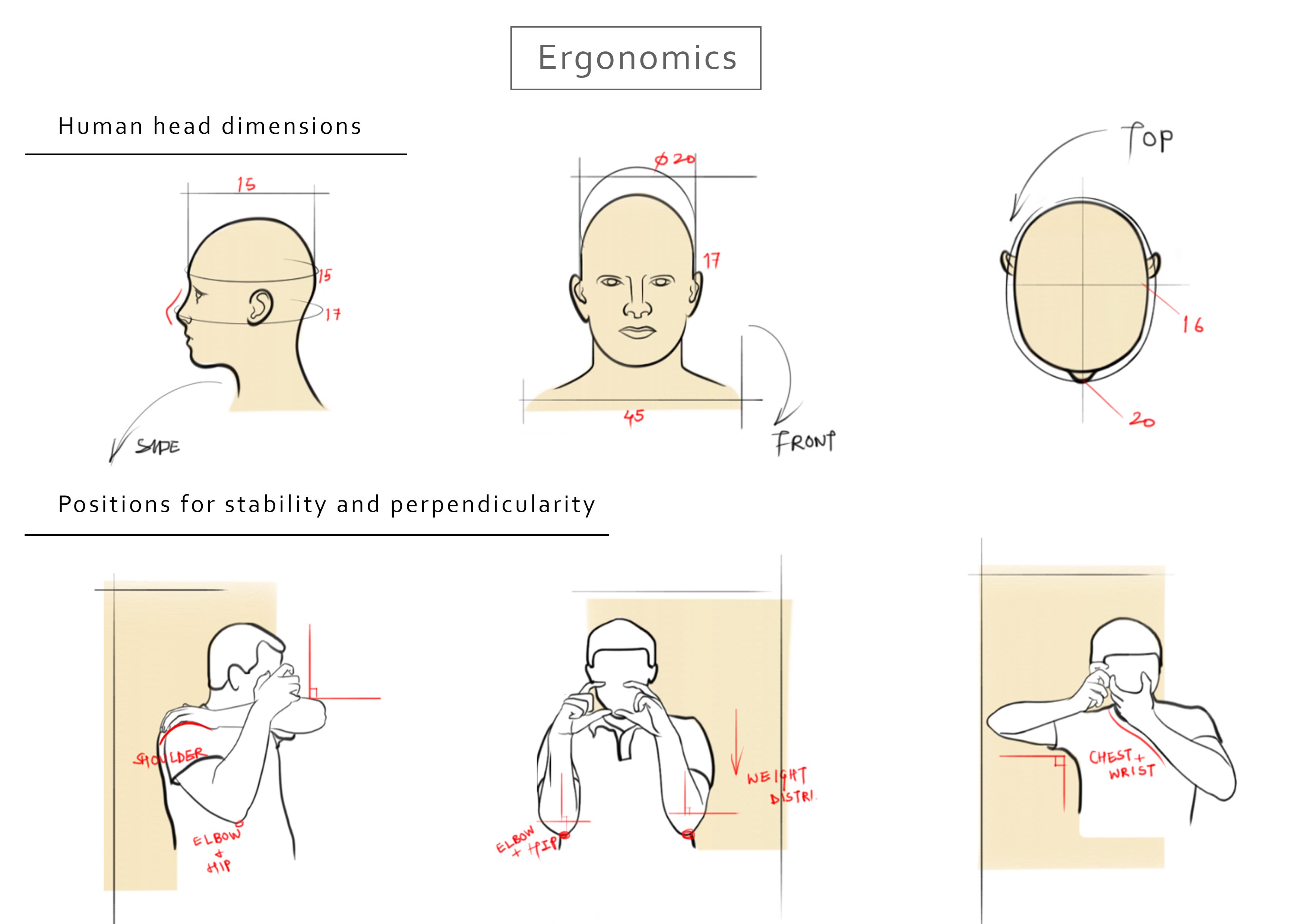
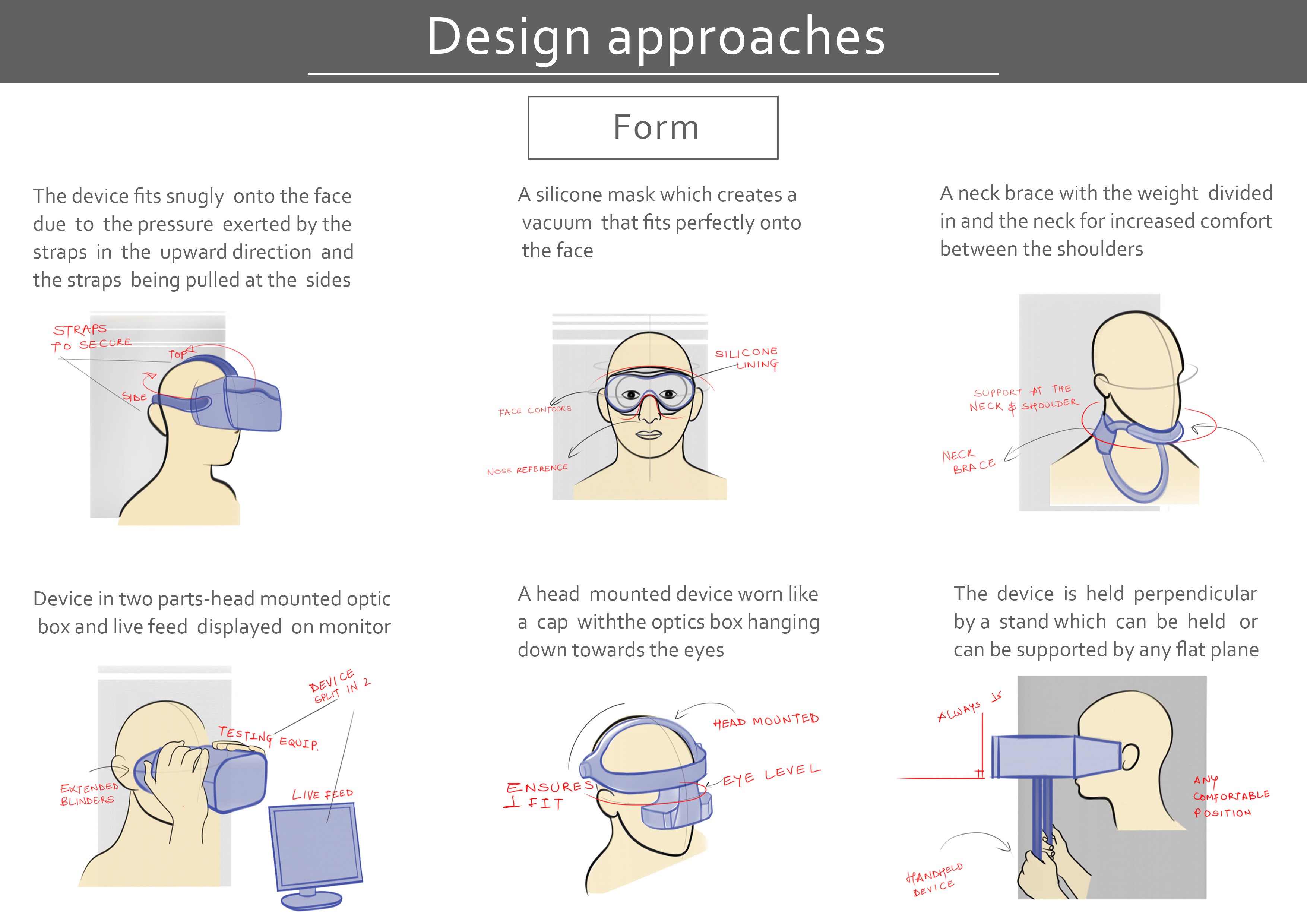
A.Symmetry along horizontal axis
The device has to be symmetric along the horizontal axis.
This is because only one eye is to be tested at a particular instance.
The cavity near the other eye is closed . To test the other eye, the device has to be flipped.
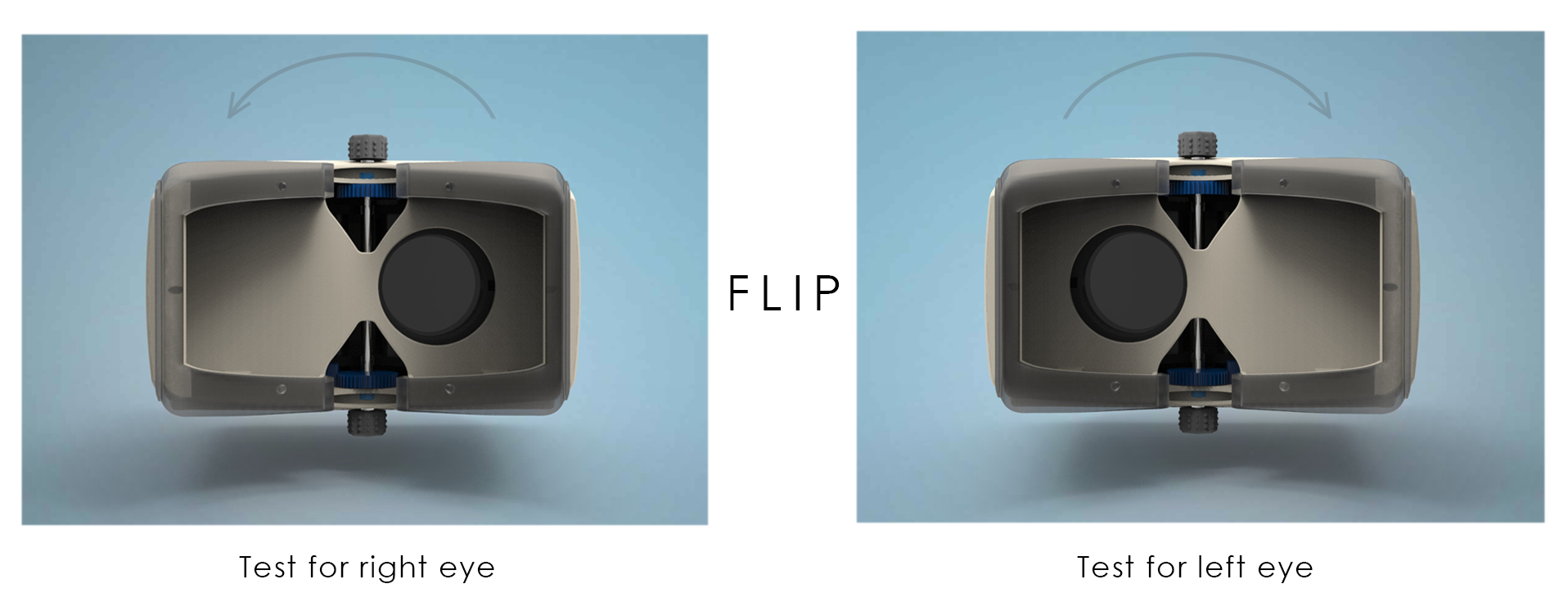
B.PLACEMENT OF SWITCHES AND KNOBS

The click switch is placed ergonomically at the side of the device.Thus, image can be captured for both the eyes by flipping the device.

The knobs for moving the optic box are placed at center bottom and center top of the device with a rod connecting the two
C. ERGONOMIC EYE PIECE
The eye piece plays the most important role in the device.
In a conventional fundus camera, the face of the patient is held steady by means of a chin support and the camera lens is placed perpendicular to the face setting.
As OWL is a hand held device ,holding the device perpendicular to the face plane was quite a task. If the device is not held perpendicular, only partial fundus can be observed.
Hence, the eyepiece had to be designed in such a way that it is a 95 percentile ergonomic fit and aligns perfectly onto the face perpendicularly.

Several mock prototypes were tried and tested to get this particular ergonomic shape.
Also the protruding end at the temples ensure a further assurance of a perfect fit.
4. WEIGHT DISTRIBUTION
The earlier prototype had the battery bank at the front of the device.
Hence, the device tended to sag(hence it was not perpendicular to the face plane)
BEFORE

AFTER

The batteries have been re-distributed at the middle portion of the device to reduce weight at the front end.
As a result, the sagging reduced and the device stayed perpendicular to the face plane.

 Deepika Dixit
Deepika Dixit
Discussions
Become a Hackaday.io Member
Create an account to leave a comment. Already have an account? Log In.